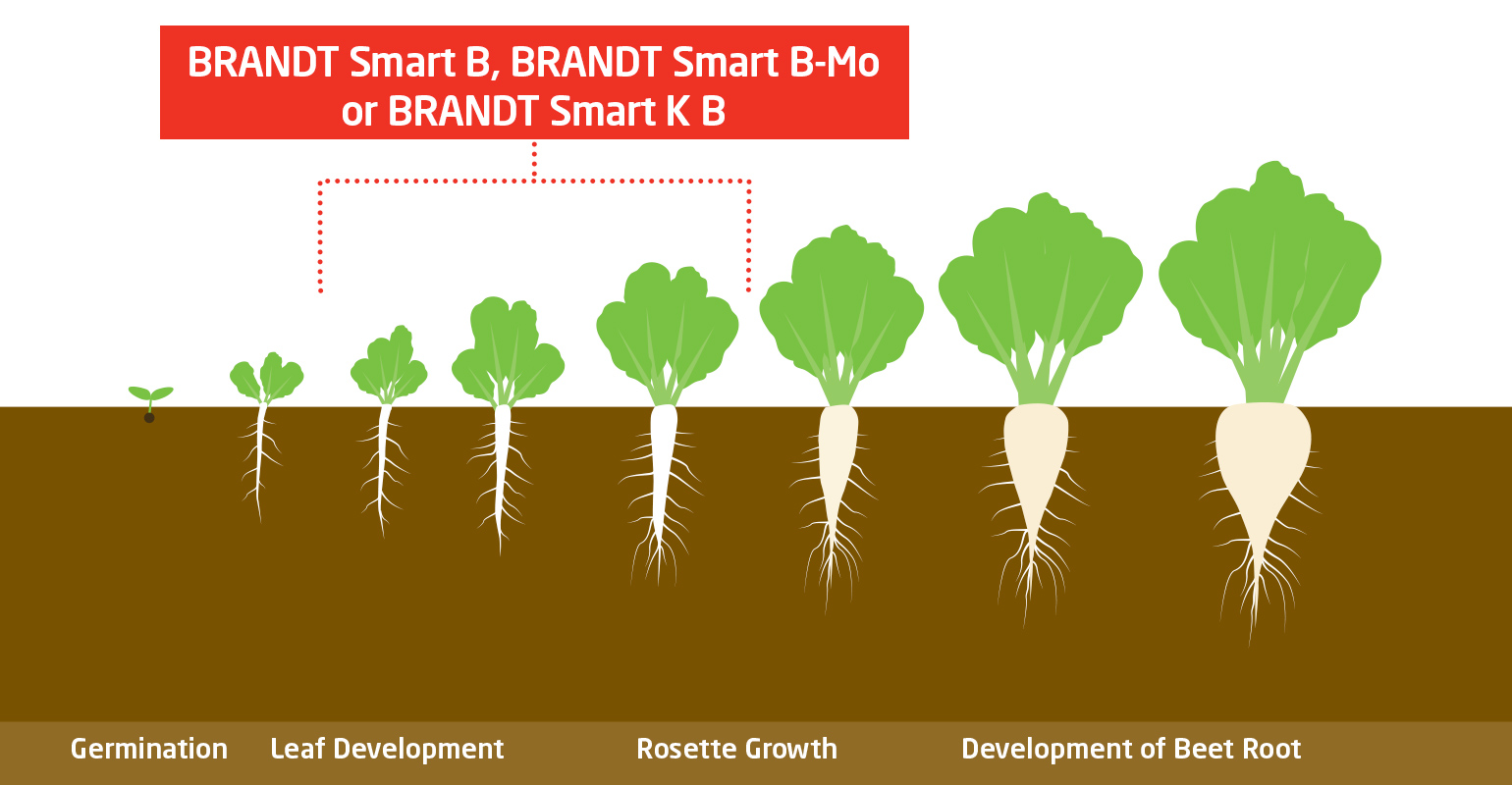Boron on Sugar Beets
May 13, 2020
Agronomics / Background
Micronutrients play a significant role in sugar beet fertility. In particular, sufficient boron levels are important to optimize yield and sugar content while minimizing the effects of disease and stress.
Boron (B) is important in plants because it facilitates the transport of sugars through cell membranes. It is also essential for cell wall synthesis and cell division, impacting both quality and yield. Low B levels weaken the structure of pectin, a fiber needed to help the plant remain physically stable. Boron does not translocate well in the plant when applied foliarly to the plant, however, BRANDT’s unique chemistries significantly improve the movement of boron in the plant.
Conditions Leading to Boron Deficiencies
Boron is very water soluble and mobile in the soil. Deficiencies are related to soil type, organic matter content, rainfall and pH. Typically, well- to excessively-drained sandy soils are most susceptible to boron deficiency. High rainfall or excessive irrigation can leach boron out of the root zone. Boron availability also decreases with increasing soil pH, particularly in alkaline‐calcareous soils. Boron uptake decreases under drought conditions; it is not uncommon in many sugar beet growing regions to have mild to moderate drought conditions during peak demand for boron.
Desired Tissue Test Values
Crop: Sugar Beets
Stage: 50-80 days after planting; 25 recently matured leaves
|
Macronutrients |
Micronutrients |
||
|
% |
ppm |
||
|
N |
4.3 - 5 |
Fe |
60 - 140 |
|
P |
0.45 – 1.1 |
Mn |
26 - 360 |
|
K |
2 - 6 |
B |
30 - 200 |
|
Ca |
0.5 – 1.5 |
Cu |
11 - 40 |
|
Mg |
0.25 - 1 |
Zn |
10 - 80 |
|
S |
0.21 – 0.5 |
Mo |
0.2 - 2 |
*Bryson, Mills, et al. “Plant Analysis Handbook III”. 2014.
Key Application Timings and Rates
- Foliar application of 0.5 - 1 pint/acre of BRANDT Smart B (or BRANDT Smart B Mo) during leaf development and early bulking stage
- These products are formulated to increase the foliar uptake and the movement of boron in the plant
- Molybdenum enhances the plant’s ability to utilize nitrogen.
- Foliar application of 1 – 2 quarts/acre of BRANDT Smart K B during leaf development and early bulking stage
- Research Trials have shown a strong response with K included
- All of these products can be applied in combination with glyphosate or fungicides

Boron Deficiency Illustrations

Photo courtesy of University of Minnesota

